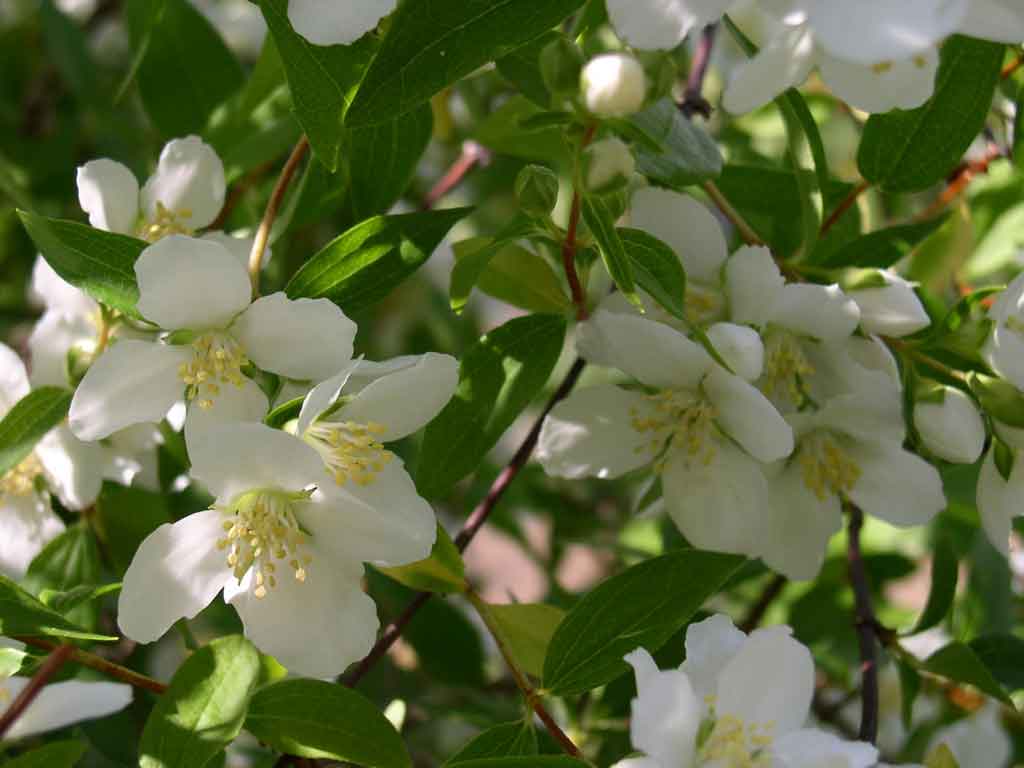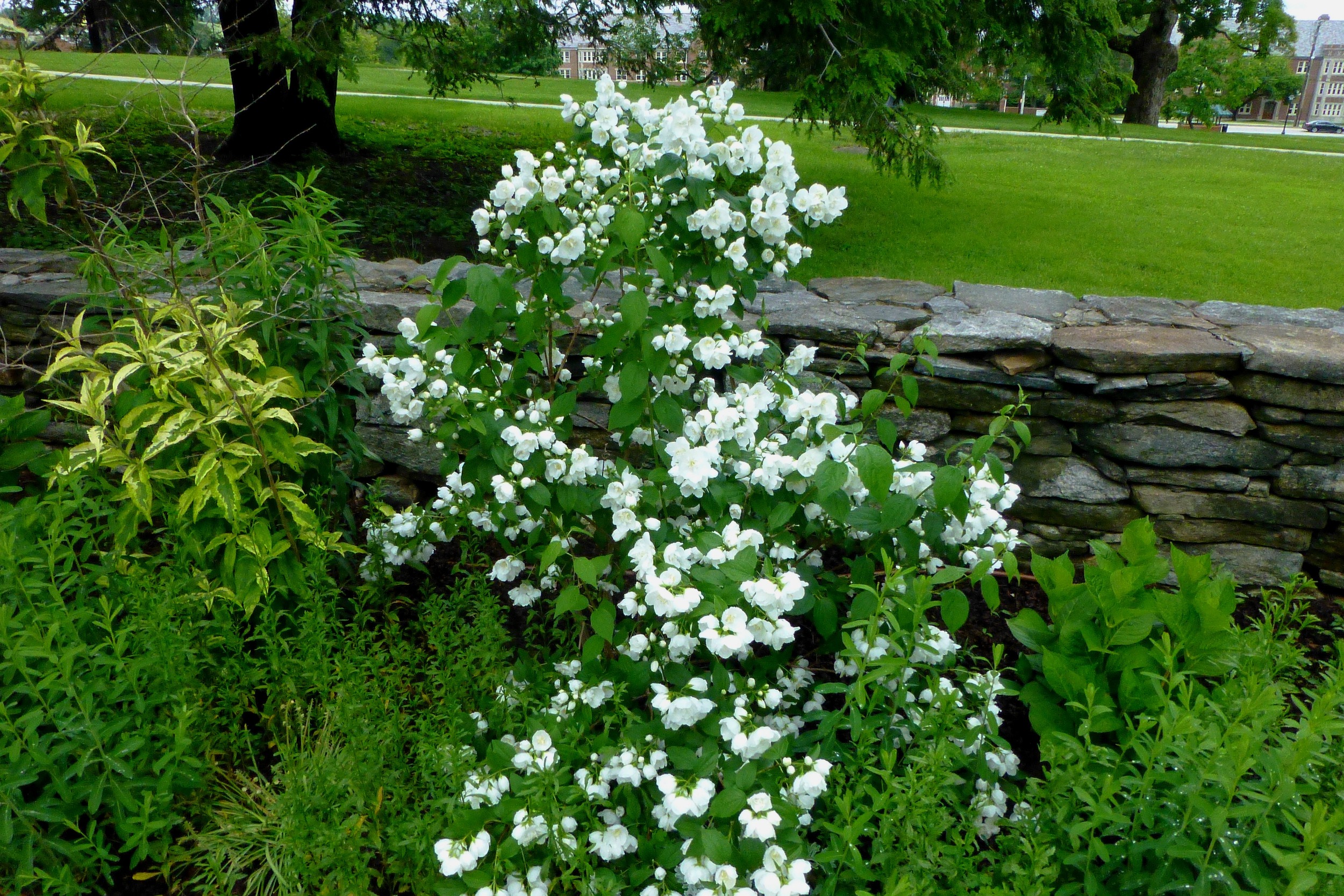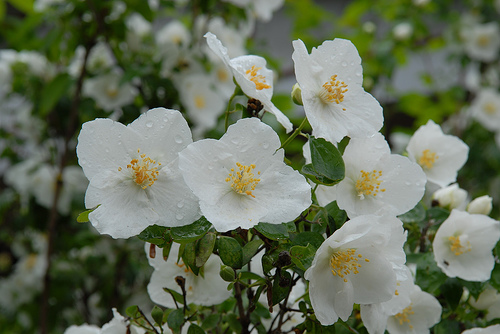Mockorange
Philadelphus spp.
Mockorange is a very hardy shrub with a long lasting, citrus-fragrant, white blooms in the late spring to early summer.
About This Plant
The mockorange shrub is most appreciated for its fragrant scent and therefore best used in an area adjacent to a driveway, walkway or patio where the scent can easily be encountered. It has a naturally vase-shaped appearance, but can be pruned annually to encourage a dense form. The pure white blooms of mock orange are fragrant and lasting. Hardiness Zones 4-8.
Now Available!
Philadelphus x virginalis 'Dwarf Snowflake' is a compact variety only growing 3-4 feet high with double, pure-white flowers with contrasting dark green leaves.
Site Selection
Choose a site with full sun for best growth and prolific flowering. This shrub needs plenty of space to grow and spread. Though it is tolerant of a wide range of soils, it performs best in well-drained locations. Use it as a background shrub or as a specimen plant. Just be sure to locate it where you can enjoy the sweet fragrance. Plant in groups, as a hedge row, privacy screen, or as an individual featured shrub in the garden.
Planting Instructions
Plant container-grown nursery plants from spring through fall. Prepare the garden bed by using a garden fork or tiller to loosen the soil to a depth of 12 to 15 inches, then mix in a 2- to 4-inch layer of compost. Dig a hole twice the diameter of the pot the plant is in. Carefully remove the plant from its container and place it in the hole so the top of the root ball is level with the soil surface. Carefully fill in around the root ball and firm the soil gently. Water thoroughly.
Care
Mockorange benefits from regular renewal or rejuvenation pruning. The process typically involves removing one-fifth to one-third of the oldest and largest stems at ground level. Cutting the larger stems encourages vigorous growth from the ground, making the shrub full from the bottom up. Selective pruning also improves the shrub's flowering capacity by allowing more light to reach the interior of the plant.


